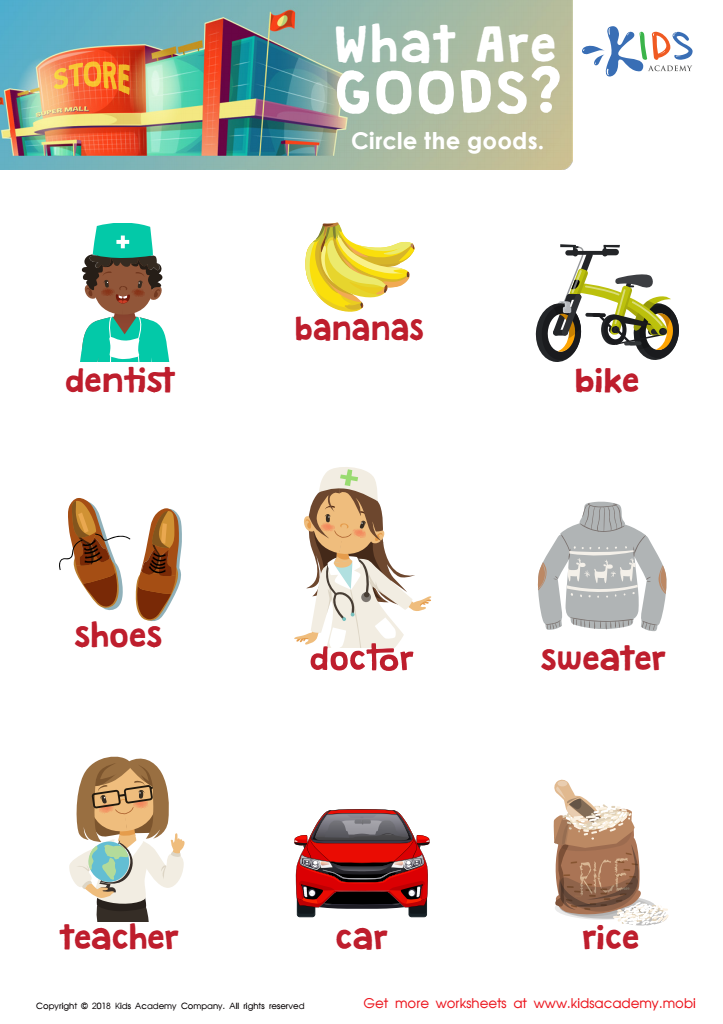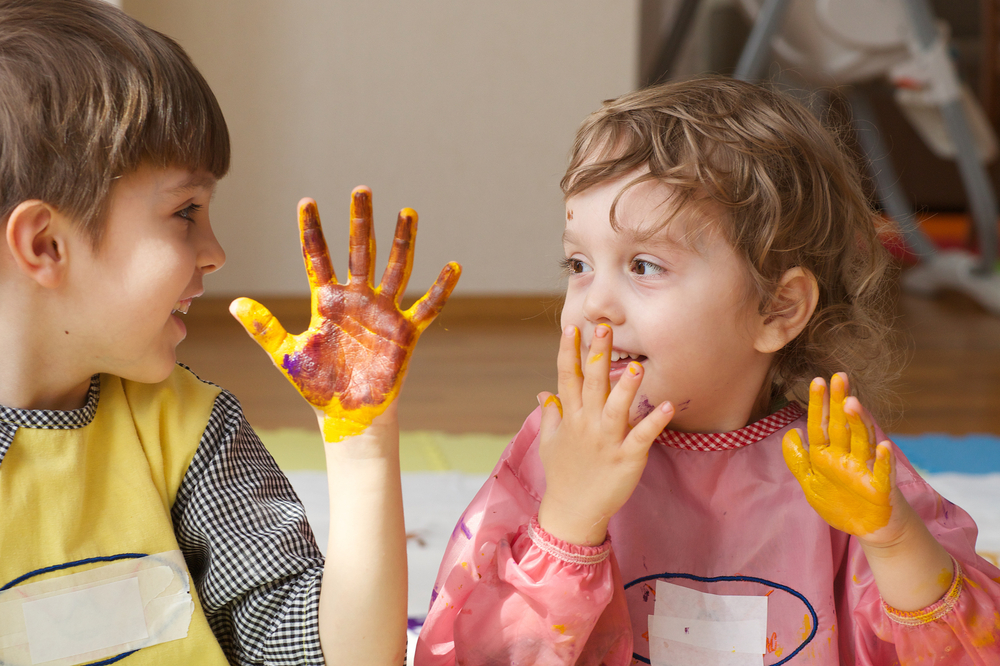Understanding goods Worksheets for Kids
1 filtered results
-
From - To


What Are Goods? Worksheet
Question/Answer
What are some effective activities to train students’ Understanding goods skill when teaching them about Community?
Effective activities to train students' understanding of goods skills in a community context include role-playing different community roles, setting up a mock market to teach about goods and services, organizing community helper guest speaker sessions, creating goods vs. services sorting games, and facilitating project-based learning where students create a business plan for a community service or good.
Why is the Understanding goods skill important for Grade 2 students?
The Understanding goods skill is important for Grade 2 students because it lays foundational knowledge in economics, teaching them about the types of goods, how goods are produced and consumed, and the basic concept of supply and demand.
How to train the Understanding goods skill in Grade 2 students learning about Community?
To train the "Understanding goods" skill in Grade 2 students, use interactive activities like role-playing market scenarios, creating simple product advertisements, and organizing classroom mini-markets. These hands-on experiences help students grasp the concept of goods, their uses, and their importance in the community by actively engaging them in buying, selling, and discussing products.
 Assign to the classroom
Assign to the classroom












